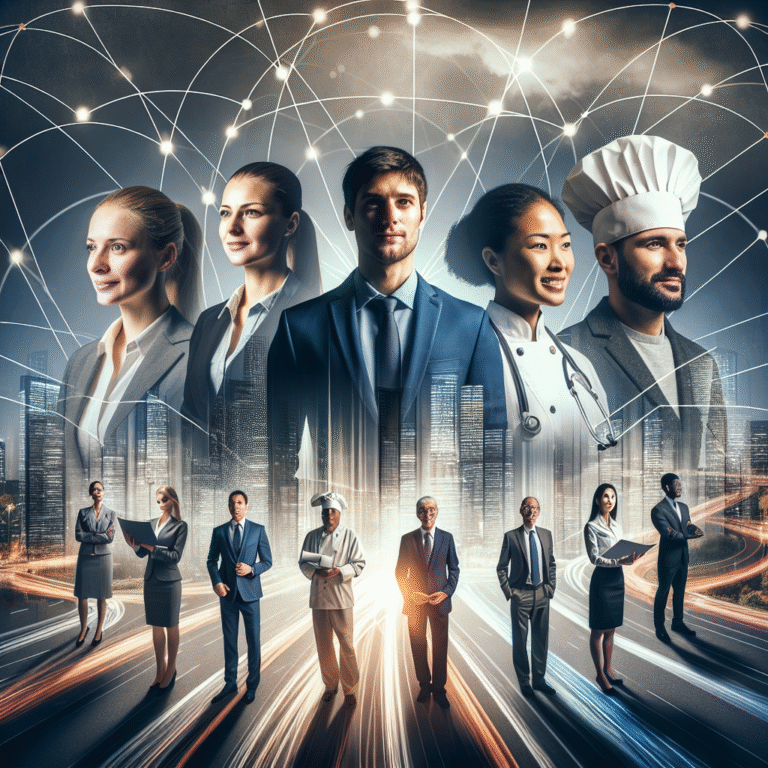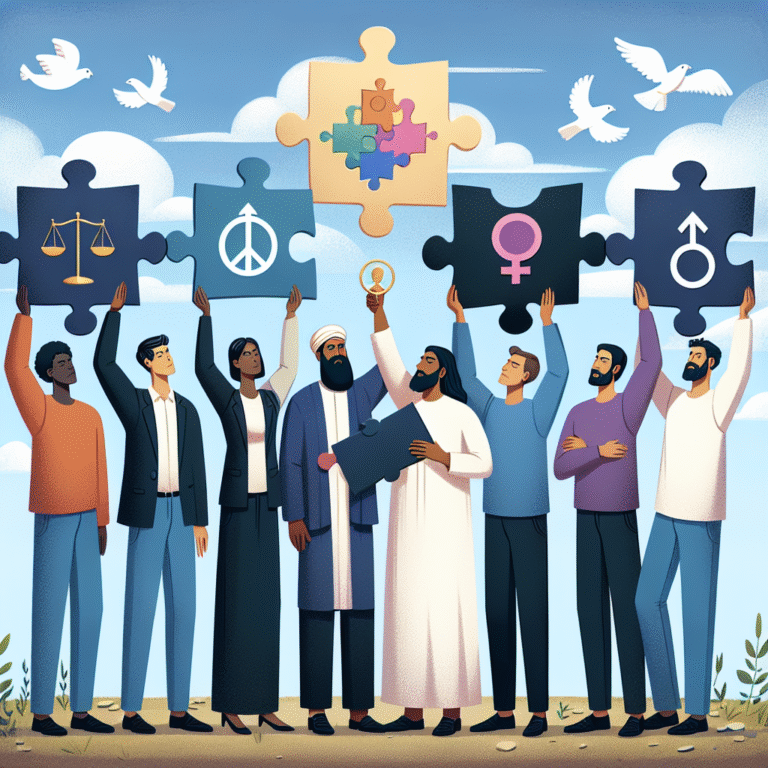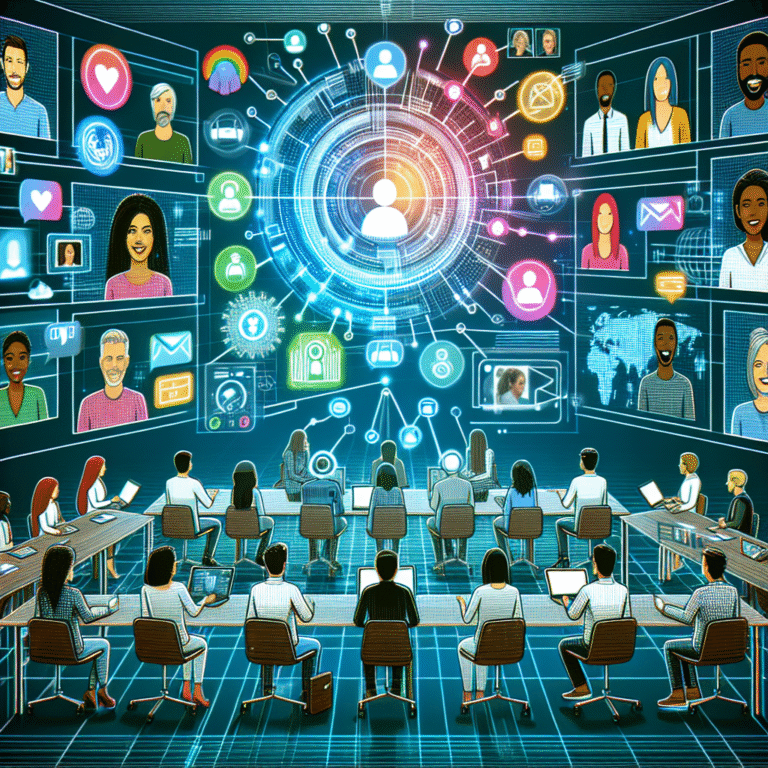
Introduction
In today’s rapidly changing social landscape, conversations surrounding gender identity have evolved significantly, moving far beyond traditional binary classifications. The phrase "Beyond the Binary" encapsulates this shift, illustrating how individuals are embracing a spectrum of identities that transcend conventional understandings of gender. This evolution is not merely a modern trend but a profound societal transformation rooted in a history of advocacy, struggle, and resilience.
The relevance of discussing the evolution of transgender identity cannot be overstated. As society becomes increasingly aware of the complexities of gender, acknowledging and understanding these identities is vital for fostering inclusivity and respect. This article delves into the nuances of transgender identity, exploring its historical roots, contemporary implications, and the ongoing dialogue that shapes our understanding "Beyond the Binary: The Evolution of Transgender Identity in Modern Society."
Historical Context of Transgender Identity
Ancient Cultures and Gender Diversity
Gender nonconformity has existed across various cultures for centuries. In many Indigenous cultures, individuals who embody both masculine and feminine traits have been revered, often holding special spiritual or community roles. For example, Two-Spirit people in many Native American tribes are recognized as embodying both gender identities, demonstrating a rich history of gender fluidity well before contemporary understandings of transgender identity emerged.
The 20th Century: A Turning Point
The early to mid-20th century marked significant advancements for transgender individuals, with the emergence of advocacy groups and public figures. Christine Jorgensen became one of the first Americans to undergo gender-affirming surgery and subsequently become a public figure, raising awareness and challenging the stigma surrounding transgender identities. As the phrase "Beyond the Binary" began to take shape, it emphasized the importance of acknowledging diverse gender experiences rather than adhering strictly to male and female categories.
Contemporary Views on Gender Identity
The Spectrum Approach
Modern dialogue increasingly embraces the idea that gender exists on a spectrum rather than within rigid categories. This acknowledgment allows individuals to identify as non-binary, genderqueer, or other identities that reflect their lived experiences. For example, the non-binary community is gaining visibility, with notable figures like Sam Smith and Janelle Monáe openly discussing their experiences outside the traditional gender binary.
Case Study: Non-Binary Visibility in Media
A notable case is the rise of non-binary representation in media through shows like "Billions," featuring non-binary character Taylor Mason. This representation has increased awareness and acceptance of non-binary identities, illustrating a pivotal moment in the ongoing narrative "Beyond the Binary: The Evolution of Transgender Identity in Modern Society."
Legal Battles and Social Change
The fight for transgender rights has culminated in various legal victories and setbacks, making headlines worldwide. The case of Gavin Grimm, a transgender boy who challenged his school district’s bathroom policy, highlights the intersectionality of identity and policy. His story emphasizes the necessity for legal frameworks to reflect evolving understandings of gender identity, further illustrating the ongoing shift of "Beyond the Binary: The Evolution of Transgender Identity in Modern Society."
Key Statistics
| Year | Event | Impact |
|---|---|---|
| 2015 | U.S. Supreme Court’s approval of same-sex marriage | Increased visibility for LGBTQ+ rights, including transgender issues |
| 2021 | Biden Administration rescinds Trump-era transgender military ban | Affirmed the rights of transgender individuals in the military, representing broader acceptance |
Challenges Facing the Transgender Community
Discrimination and Healthcare
Despite progress, many transgender individuals face systemic discrimination, particularly in healthcare access. Studies indicate that transgender people experience higher rates of mental health issues due to societal rejection, highlighting an urgent need for compassionate healthcare services.
Case Study: Transgender Healthcare Inequality
Research from the American Academy of Family Physicians reveals that 23% of transgender individuals reported being refused care due to their gender identity. This statistic underscores the critical need for inclusive healthcare policies that recognize diverse identities and provide necessary support.
Youth and Gender Identity
The increasing visibility of transgender youth raises questions about support systems available within schools and families. Programs focusing on inclusivity and education can significantly impact self-acceptance and mental health among young individuals exploring their gender identity.
Media Misrepresentation
Media portrayal continues to influence societal attitudes towards transgender individuals. Often, narratives are constructed through a narrow lens, leading to misconceptions and reinforcing stereotypes. This provides an impetus for advocating for authentic representation, emphasizing the importance of voices from within the community.
The Role of Activism
Grassroots Movements
Grassroots movements play a pivotal role in advocating for transgender rights and inclusivity. Organizations such as the Human Rights Campaign and Gender Justice are working tirelessly to educate communities, influence policy, and create safe spaces for diverse gender identities.
Case Study: The Gender Justice Movement
The Gender Justice movement has illuminated the experiences of marginalized groups within the transgender spectrum, especially focusing on trans people of color. Their advocacy emphasizes intersectionality, ensuring that all voices within the broader identity spectrum are heard.
Intersectionality and Transgender Identity
Understanding the intersection of race, class, and gender is crucial in discussions about transgender identity. Many individuals face compounded discrimination that affects various aspects of their lives, requiring a nuanced approach to advocacy that considers multiple identities.
Empowering Future Generations
Education and Awareness
Education plays a vital role in fostering understanding and acceptance of diverse gender identities. Schools and institutions are encouraged to implement comprehensive curricula that include discussions about gender diversity.
| Action Item | Impact |
|---|---|
| Implementing LGBTQ+ inclusive education | Encourages acceptance and reduces bullying for transgender students |
| Training for educators on gender identity | Creates a supportive environment for all students, regardless of gender identity |
Safe Spaces
Creating safe spaces for individuals exploring their gender identity is essential. Community centers, support groups, and online platforms provide vital resources for personal exploration and connection.
Conclusion
The journey "Beyond the Binary: The Evolution of Transgender Identity in Modern Society" reflects a dynamic interplay of personal experience, historical context, and cultural shifts. As we advance into a more inclusive future, it’s crucial to continue advocating for acceptance, understanding, and respect for all gender identities.
As readers, we are encouraged to foster awareness, actively challenge stereotypes, and support legislation that protects the rights of transgender individuals. The evolution of transgender identity is not only about individual experiences but also about building a society that embraces diversity, acknowledges struggles, and celebrates uniqueness.
FAQs
1. What does "Beyond the Binary" mean?
"Beyond the Binary" refers to the understanding that gender is not limited to just male and female, but exists on a spectrum where individuals can identify in numerous ways.
2. How can I support transgender individuals in my community?
Support transgender individuals by educating yourself on LGBTQ+ issues, advocating for inclusive policies, and creating safe spaces for open dialogue.
3. What resources are available for transgender youth?
Numerous organizations, such as The Trevor Project and Trans Lifeline, provide resources, support, and advocacy specifically tailored for transgender youth.
4. How do healthcare disparities affect transgender individuals?
Transgender individuals often face discrimination in healthcare settings, limiting their access to necessary medical care and exacerbating mental health issues.
5. What steps are being taken to improve transgender visibility in media?
Efforts to improve transgender visibility in media involve advocating for authentic representation, developing diverse scripts, and hiring transgender actors in lead roles.
Understanding "Beyond the Binary: The Evolution of Transgender Identity in Modern Society" is not just about absorbing information but about taking active steps toward a more equitable future for all gender identities.

















